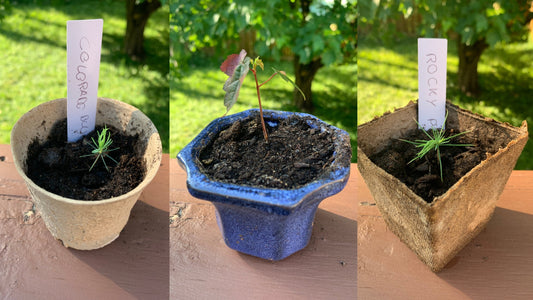Introduction
Japanese culture is rich and fascinating, offering a multitude of traditions and practices that captivate minds around the world. From the delicate art of bonsai to the profound concept of ikigai, tea ceremonies and colorful festivals, Japan has a culture that is both ancient and vibrant, rooted in centuries of history and philosophy. This article invites you on a journey through these traditions, allowing you to discover the depth and beauty of Japanese culture.
At the heart of Japanese culture is the concept of ikigai, a term that literally means “reason for being.” Finding your ikigai is essential to leading a life full of meaning and satisfaction. This concept, while deeply rooted in Japanese culture, has found global resonance as more and more people seek to balance their personal and professional lives. We will explore how ikigai can transform your daily life and help you achieve an optimal state of well-being.
In addition to ikigai, Japanese culture is also defined by its many traditions and festivals. From events like Hanami, where people gather to admire the fleeting beauty of cherry blossoms, to tea ceremonies that embody simplicity and serenity, these practices reflect the importance of beauty, nature and community in Japanese life. These traditions are not just visual spectacles; they are profound manifestations of values and beliefs that have spanned the ages.
The art of bonsai is another facet of Japanese culture that has captivated gardening enthusiasts and plant enthusiasts around the world. Bonsai growing, which involves growing small trees in pots so that they resemble real, mature trees, is a practice that requires patience, precision and a keen sense of aesthetics. Together we will discover the history of bonsai, cultivation techniques and the benefits that this activity can bring to your daily life.
This article is an invitation to explore and appreciate the various aspects of Japanese culture. Whether you're already an enthusiast of this culture like us or want to learn more, our journey through Japanese traditions will give you a new perspective and hopefully inspire you to incorporate some of these elements into your own life. Prepare to be amazed by the richness and depth of Japanese culture, and discover how Ikigai Box can help you embrace these traditions.
Part 1: The Concept of Ikigai
Ikigai is a concept deeply rooted in Japanese culture, but its true meaning is sometimes misinterpreted. In Japanese, "iki" means life and "gai" means worth or dignity. Thus, ikigai can be translated as the “value of life” or the “reason for living”. It is a complex concept that encompasses the meaning, satisfaction and happiness found in daily life.
Contrary to what some might believe, ikigai is not simply a magic formula for finding instant happiness. Rather, it is seen as a continuous process of searching for meaning and satisfaction throughout one's life. Ikigai is not limited to a specific activity or career; it encompasses all aspects of life, including personal relationships, leisure activities and community commitments.
It's worth noting that the oft-cited four components of ikigai - what you like, what you're good at, what the world needs, and what you can get paid for - are actually a Western simplification of the concept. original. In Japan, there is no direct remuneration implication in ikigai. The idea of doing something for money is not central to the Japanese concept; rather, it’s about finding meaning and satisfaction in what you do, regardless of the material reward.
The precise origin of ikigai is difficult to trace, but it is often associated with the Okinawa region of Japan, known for having one of the longest and healthiest populations in the world. Okinawans often attribute their longevity to their ikigai, which motivates them to stay active and engaged in life, regardless of their age.
In summary, ikigai is much more than just a concept of happiness or personal success. It is a profound life philosophy that encourages everyone to find their own path to happiness and satisfaction, embracing what truly gives meaning to their life. If you want to know more, we have also written a complete article about the Ikigai philosophy.
Part 2: The Richness of Japanese Traditions
Traditional Festivals
Japan is famous for its many traditional festivals, which are colorful and lively events celebrating various aspects of Japanese culture. Among the most popular is Hanami, which celebrates the blossoming of cherry trees and is an opportunity for people to gather in parks to picnic and admire the flowers. The Tanabata, or star festival, is another important celebration that commemorates the legend of two stars, Altair and Vega, which meet once a year on the seventh day of the seventh lunar month. Obon, on the other hand, is a Buddhist festival that honors the spirits of ancestors and is marked by folk dances and fireworks.
The Art of the Tea Ceremony
The tea ceremony, or chanoyu, is a refined and elegant Japanese ritual that highlights the preparation and tasting of matcha green tea. This practice is centered on the principles of purity, harmony, tranquility and respect. The tea ceremony is often associated with Zen philosophy and is seen as a way to relax and reconnect with oneself and others.
Japanese Calligraphy
Japanese calligraphy, or shodo, is a traditional art of writing Japanese characters with a brush and ink. This art is valued for its beauty and simplicity, as well as the depth of meaning it can convey through written words. Calligraphy is often practiced as a form of meditation, allowing the practitioner to concentrate fully on the gesture of writing.
The richness of Japanese traditions is a reflection of the depth of Japanese culture. These ancestral practices, whether festive, ceremonial or artistic, bear witness to the beauty, spirituality and philosophy that permeate the daily lives of the Japanese. By exploring these traditions, one can better understand and appreciate the very essence of Japanese culture.
We have also written an article on the 5 traditional Japanese arts which concluded the international: How the 5 most popular Japanese arts conquered the world .
Part 3: The Art of Bonsai
Origin and History of Bonsai
Bonsai are miniature trees grown in pots and shaped to resemble their full-sized counterparts. This form of horticultural art has its origins in China more than a thousand years ago, before developing and perfecting itself in Japan. The first bonsai were wild trees transplanted into containers for use as decorative features in gardens and temples. Over time, the Japanese developed specific techniques for growing and maintaining these miniature trees, making bonsai a symbol of patience, care and respect for nature.
Bonsai Cultivation Techniques
Growing bonsai requires special know-how to ensure the health and beauty of these miniature trees. Basic techniques include pruning, which helps control the growth of the tree and give it an aesthetic shape, repotting, which renews the substrate and encourages root growth, and cabling, which helps shape the branches according to the artist's vision. These techniques require patience and precision, but they create vivid and evocative works of art.
The Benefits of Growing Bonsai
Growing bonsai can provide many mental, emotional, and even physical benefits. On a mental level, the process of creating and caring for a bonsai can be meditative and calming, helping to reduce stress and anxiety. Emotionally, the satisfaction of seeing a tree grow and thrive under your care can enhance feelings of accomplishment and connection with nature. Additionally, the practice of growing bonsai encourages patience, perseverance, and respect for time and the growing process.
In conclusion, the art of bonsai is much more than just a form of gardening. It is an ancient and profound practice that embodies patience, beauty and contemplation. By growing bonsai, one embarks on a journey of self-discovery and nature, learning to appreciate the beauty and transience of life. Do you want to learn the art of Bonsai? Order the Bonsai Box today, the complete kit for growing bonsai from seeds (100% Canadian), a unique and original gift.
Conclusion
Exploring Japanese culture through its traditions is a fascinating journey that allows us to delve into a world rich in history, spirituality and aesthetics. From ikigai to bonsai art, festivals and traditional ceremonies, each aspect of Japanese culture offers a unique window into how Japanese people view the world and their place in it.
Ikigai, a central concept in Japanese culture, teaches us the importance of finding meaning in our lives and living in accordance with our deepest values. It reminds us that happiness does not lie in the constant search for fleeting pleasures, but in the discovery of what truly drives us and gives us a feeling of accomplishment.
Japanese traditions, whether festive, ceremonial or artistic, show us the deep respect the Japanese have for nature, community and beauty. The tea ceremony, calligraphy and traditional festivals are all expressions of this philosophy of life which emphasizes harmony, simplicity and gratitude.
Finally, the art of bonsai reminds us of the value of patience, perseverance and contemplation in a world where everything often moves too quickly. Growing a bonsai means engaging in a process that transcends the simple act of gardening to become a true meditation on life and the passing of time.
By exploring these traditions, we not only have the opportunity to discover a rich and fascinating culture, but also to question our own lives and our own values. Japanese culture offers us a mirror in which we can see our own aspirations and challenges reflected, helping us to grow and flourish as human beings.
May this journey through Japanese traditions inspire and enrich you, and encourage you to find your own ikigai and cultivate your own garden of happiness and meaning. Embrace these traditions with your whole being and let them guide you toward a richer, deeper, more fulfilling life.
We hope this article has given you an insight into the depth and beauty of Japanese culture, and we invite you to continue exploring and learning, as there is so much to discover and enjoy in this fascinating world.
Discover Ikigai Box and let us help you integrate the wisdom and beauty of Japanese culture into your daily life. May your journey to ikigai be as enriching as it is rewarding!




